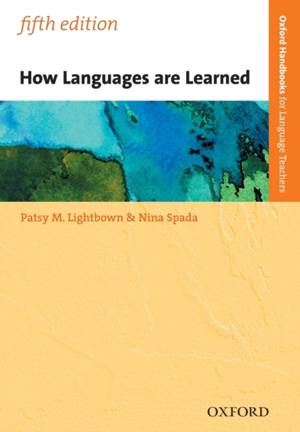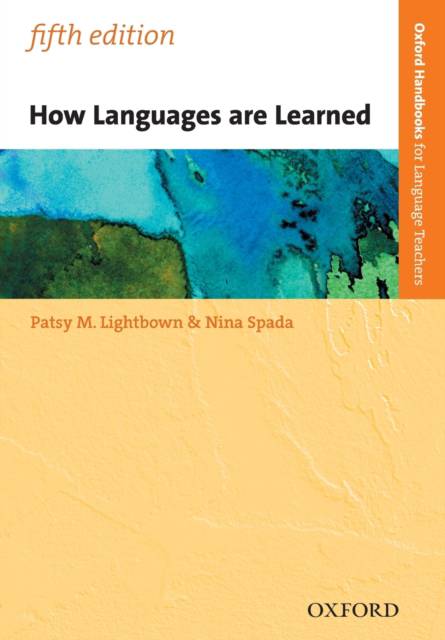
- Afhalen na 1 uur in een winkel met voorraad
- Gratis thuislevering in België vanaf € 30
- Ruim aanbod met 7 miljoen producten
- Afhalen na 1 uur in een winkel met voorraad
- Gratis thuislevering in België vanaf € 30
- Ruim aanbod met 7 miljoen producten
Zoeken
Omschrijving
Relates theories of first and second language acquisition to what actually goes on in the classroom Uses activities throughout to explore the practical implications of the ideas presented NEW Updated content gives teachers information about recent research on L2 learning NEW Activities and Questions for Reflection personalise content and support critical thinking NEW Extra Activities, Study Questions, and videos available online at https: //protect-us.mimecast.com/s/2ebwCBB60wi11LBRiW8MLY?domain=oup.com Unlike many introductions to the field of language acquisition research, How Languages are Learned does not assume that you are already familiar with research methods or theories. Its clear, readable style and absence of unnecessary technical jargon has helped to make it a standard text for trainee teachers throughout the world. There are evaluations and case studies throughout the book so that you can see a practical context for the research ideas you are reading about. Many of these examples are taken directly from real first and second language classrooms. The new Activities feature provides opportunities for you to think through the research being discussed. Each chapter ends with Questions for Reflection which draw on your experiences of language learning and teaching and your critical thinking skills to revise the chapter content. Reference to language acquisition research has been updated throughout the chapters and suggestions for further reading.
Specificaties
Betrokkenen
- Auteur(s):
- Uitgeverij:
Inhoud
- Aantal bladzijden:
- 296
- Taal:
- Engels
- Reeks:
Eigenschappen
- Productcode (EAN):
- 9780194406291
- Verschijningsdatum:
- 1/07/2022
- Uitvoering:
- Paperback
- Formaat:
- Trade paperback (VS)
- Afmetingen:
- 169 mm x 245 mm
- Gewicht:
- 449 g

Alleen bij Standaard Boekhandel
Beoordelingen
We publiceren alleen reviews die voldoen aan de voorwaarden voor reviews. Bekijk onze voorwaarden voor reviews.








